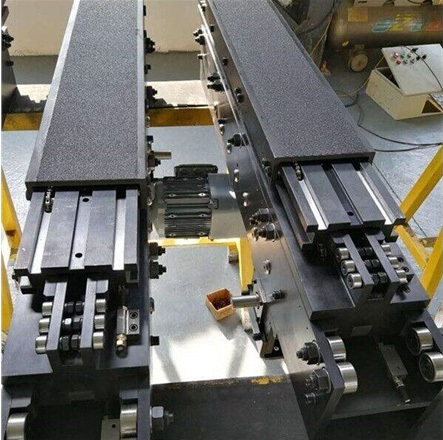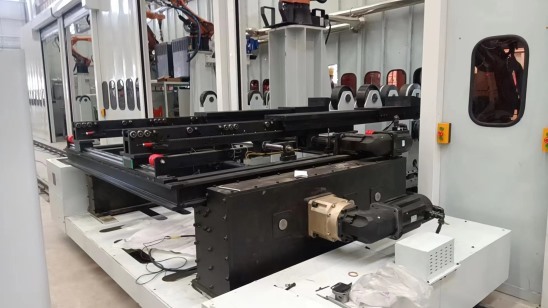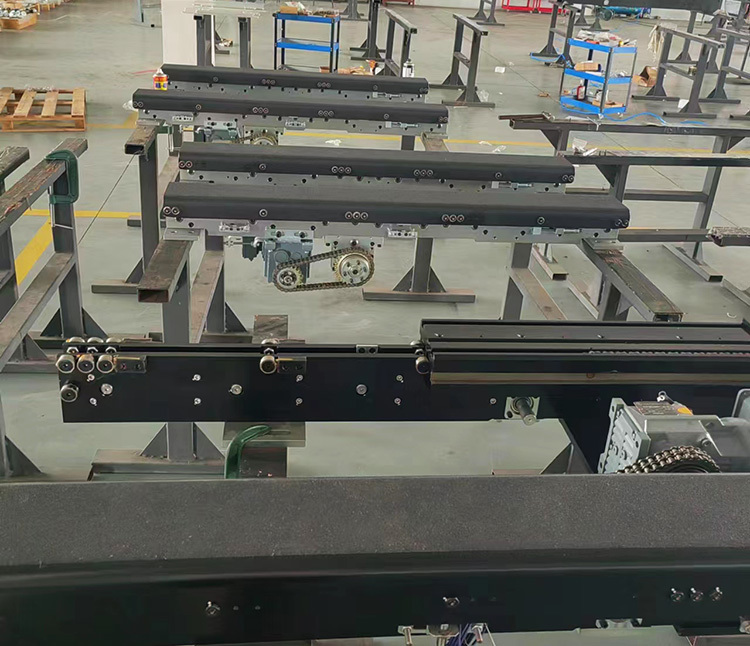The load-bearing capacity of the stacker crane telescopic fork
Publish Time:
2025-06-24
As an automated logistics warehousing equipment, stacker cranes are widely used in warehouses and logistics centers. One of its core components, the telescopic fork, its load-bearing capacity is directly related to the operating efficiency and safety of the stacker crane.
As an automated logistics and warehousing equipment, stacker cranes are widely used in warehouses and logistics centers. One of its core components, the telescopic fork, directly affects the operating efficiency and safety of the stacker crane. Below, we will delve into the load-bearing capacity of stacker crane telescopic forks.
I. Basic Structure of Telescopic Forks
Telescopic forks are an important part of stacker cranes, usually composed of multiple fork sections. Each fork section is connected by high-strength steel to achieve telescopic functionality. Its design is ingenious and the structure is stable to adapt to the handling needs of goods of different lengths.
II. Key Factors Affecting Load-Bearing Capacity
1. Material Selection: Telescopic forks usually use high-strength steel, such as alloy steel, to ensure their load-bearing capacity.
2. Rational Design: The number, size, and connection method of fork sections all affect their load-bearing capacity.
3. Manufacturing Process: High-quality welding, heat treatment, and other manufacturing processes can improve the load-bearing performance of the forks.
III. Specific Numerical Values of Load-Bearing Capacity
The load-bearing capacity of telescopic forks varies depending on the specific model and manufacturer. Generally, their load-bearing capacity can range from several tons to tens of tons. In practical applications, users need to select appropriate forks based on factors such as the weight of the goods and the stacking height.
IV. Safety Precautions
1. Strictly Prohibit Overload: Follow the manufacturer's instructions to ensure that the maximum load-bearing capacity of the fork is not exceeded.
2. Regular Inspection and Maintenance: Regularly inspect the forks to ensure they are in good working condition.
3. Reasonable Operation: When operating the stacker crane, ensure that the goods are placed stably and balanced on the forks.
V. Conclusion
In summary, the load-bearing capacity of stacker crane telescopic forks is affected by various factors such as material, design, and manufacturing processes. In practical applications, users need to select appropriate forks based on factors such as the weight of the goods and the operating environment, and follow safe operating procedures to ensure the operating efficiency and safety of the stacker crane. In the future, with the continuous development of logistics and warehousing technology, the load-bearing capacity of telescopic forks will be further improved to meet a wider range of application needs.
Latest News
Contact Information:
13399555771 (International) / 4006786168(Domestic)
德尔盟
Email:
Delmeng Intelligent Equipment (Maanshan) Co., Ltd. is a high-tech enterprise focusing on the research and development, design, manufacturing, and sales of intelligent logistics equipment. The company's core product is telescopic forklifts, which are widely used in automated storage and retrieval systems (AS/RS) and other intelligent warehousing fields.
HUATAO GROUP
Online Message
If you are interested in us or our products, please feel free to leave us a message.





